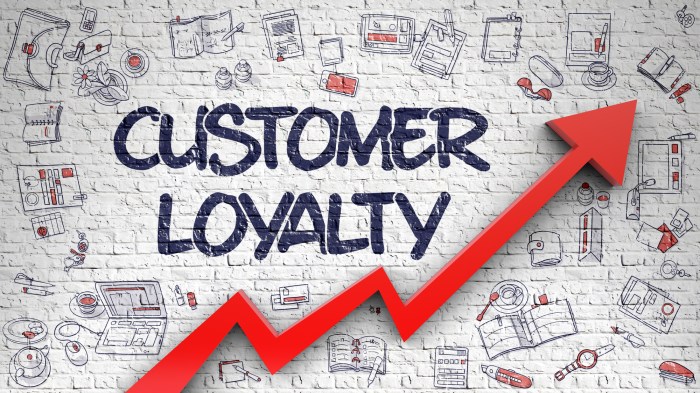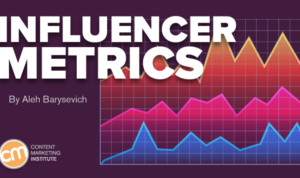Creating a Loyalty Program sets the stage for building lasting relationships with customers while driving business growth. From defining loyalty programs to implementing innovative strategies, this guide dives into the essentials of fostering customer loyalty.
Introduction to Loyalty Programs

A loyalty program is a marketing strategy designed to incentivize customers to continue purchasing goods or services from a particular business. The main purpose of a loyalty program is to build a strong relationship with customers, increase customer retention, and ultimately drive sales.
Benefits of Loyalty Programs
- Loyalty programs help businesses retain customers by offering rewards and incentives for repeat purchases.
- Customers benefit from loyalty programs by receiving discounts, exclusive offers, and other perks for their continued loyalty.
- Implementing a loyalty program can increase customer engagement, leading to higher customer satisfaction and brand loyalty.
Examples of Successful Loyalty Programs
| Industry | Example |
|---|---|
| Retail | Amazon Prime: Offers free shipping, exclusive deals, and streaming services for members. |
| Airlines | Delta SkyMiles: Rewards frequent flyers with miles that can be redeemed for flights, upgrades, and more. |
| Coffee Chains | Starbucks Rewards: Gives customers points for purchases that can be used for free drinks and food items. |
Types of Loyalty Programs
When it comes to loyalty programs, companies have a variety of options to choose from based on their business model and customer base. Each type of loyalty program has its own unique characteristics and can be effective in different ways.
Points-Based Loyalty Programs
Points-based loyalty programs are one of the most common types, where customers earn points for purchases which can be redeemed for rewards. This type of program is effective in incentivizing repeat purchases and increasing customer engagement. For example, Starbucks Rewards allows customers to earn stars for every purchase which can be redeemed for free drinks and food items.
Tiered Loyalty Programs
Tiered loyalty programs offer different levels of benefits based on a customer’s loyalty status. As customers move up tiers, they unlock more exclusive rewards and perks. This type of program is effective in encouraging customers to spend more to reach the next tier. An example of a company using tiered loyalty program is Sephora with their Beauty Insider program.
Paid Loyalty Programs
Some companies offer paid loyalty programs where customers pay a fee to access exclusive benefits and rewards. This type of program is effective in creating a sense of exclusivity and can generate additional revenue for the company. Amazon Prime is a prime example of a paid loyalty program that offers free shipping, streaming services, and more for a yearly fee.
Non-Monetary Loyalty Programs
Non-monetary loyalty programs focus on rewarding customers with experiences or perks rather than discounts or cash rewards. This type of program can create emotional connections with customers and increase brand loyalty. An example of a company using non-monetary loyalty program is Nike with their NikePlus membership offering exclusive access to events and products.
Designing a Loyalty Program: Creating A Loyalty Program
Loyalty programs are a key strategy for businesses to retain customers and increase their lifetime value. When designing a loyalty program, several key factors need to be considered to ensure its effectiveness.
Target Audience
Identifying the target audience is crucial in designing a successful loyalty program. Understanding the demographics, preferences, and behaviors of your customers will help tailor the program to meet their needs and expectations.
Rewards
The rewards offered in a loyalty program play a significant role in incentivizing customers to participate. It is important to offer rewards that are valuable and relevant to your target audience. Whether it’s discounts, exclusive offers, or freebies, the rewards should be enticing enough to keep customers engaged.
Structure
The structure of the loyalty program should be clear and easy to understand. Customers should know how they can earn points, redeem rewards, and progress through the program. A well-defined structure will encourage participation and make the program more appealing.
Setting Achievable Goals
To measure the success of a loyalty program, it is essential to set achievable goals from the outset. Whether it’s increasing customer retention, boosting sales, or improving customer satisfaction, having clear objectives will help track the program’s effectiveness and make necessary adjustments.
Measuring Success
There are various metrics to measure the success of a loyalty program, such as customer retention rate, repeat purchase rate, and average order value. Regularly monitoring these metrics and analyzing customer feedback will provide insights into the program’s performance and areas for improvement.
Creating a Cohesive Brand Image
A loyalty program is an extension of your brand, and it should reflect your brand values and identity. Consistent branding across all touchpoints, from program communications to rewards, will help create a cohesive and attractive brand image. This will strengthen customer loyalty and trust in your brand.
Implementing and Managing a Loyalty Program

Implementing and managing a loyalty program requires careful planning and execution to ensure its success. From setting objectives to analyzing data, each step plays a crucial role in the program’s effectiveness.
Steps in Implementing a Loyalty Program
- Define clear objectives: Establish specific goals for the loyalty program, whether it’s increasing customer retention, driving repeat purchases, or acquiring new customers.
- Choose the right rewards: Select rewards that are valuable and relevant to your target audience to incentivize participation.
- Design a user-friendly program: Create a seamless and easy-to-understand loyalty program that encourages customer engagement.
- Implement a robust tracking system: Utilize technology to track customer interactions and purchases to gather data for analysis.
- Evaluate and optimize: Continuously monitor the program’s performance and make adjustments based on customer feedback and data insights.
Importance of Communication and Marketing Strategies
Effective communication and marketing strategies are essential to promote the loyalty program and maximize customer engagement. Utilize various channels such as email, social media, and in-store promotions to communicate the benefits of the program and encourage sign-ups. Engage with customers through personalized messages and exclusive offers to increase program participation.
Best Practices for Managing Customer Data
- Secure data collection: Implement data protection measures to ensure customer information is kept confidential and secure.
- Segment customer data: Divide customers into different groups based on their behavior and preferences to tailor rewards and offers accordingly.
- Analyze data regularly: Use data analytics tools to track customer activity and measure the effectiveness of the loyalty program in driving customer loyalty and engagement.
- Personalize customer experiences: Leverage customer data to deliver personalized experiences and offers that resonate with individual preferences and shopping habits.
Technology and Tools for Loyalty Programs
In today’s digital age, technology plays a crucial role in shaping modern loyalty programs. From mobile apps to CRM software and data analytics, businesses leverage various tools to enhance customer engagement and loyalty.
Mobile Apps for Loyalty Programs
Mobile apps have revolutionized the way businesses interact with their customers. Loyalty programs integrated into mobile apps offer a convenient and personalized experience for users. Through push notifications, in-app rewards, and exclusive offers, businesses can keep customers engaged and loyal.
CRM Software for Loyalty Programs
CRM (Customer Relationship Management) software allows businesses to track customer interactions and tailor loyalty program offerings based on individual preferences and behavior. By analyzing customer data, businesses can create personalized rewards and incentives that resonate with their target audience.
Data Analytics for Loyalty Programs
Data analytics tools enable businesses to gain valuable insights into customer behavior, preferences, and trends. By tracking key metrics such as purchase history, engagement levels, and redemption rates, businesses can optimize their loyalty programs for maximum effectiveness. This data-driven approach helps businesses make informed decisions to enhance customer loyalty.
Importance of Personalization and Customization
Personalization and customization are essential aspects of successful loyalty programs. By tailoring rewards, offers, and communications to individual customers, businesses can create a unique and memorable experience that fosters long-term loyalty. Customers appreciate personalized interactions and are more likely to remain loyal to a brand that understands and values their preferences.
Customer Engagement and Retention Strategies
Customer engagement and retention are crucial aspects of a successful loyalty program. By implementing effective strategies, businesses can keep customers coming back for more while building long-lasting relationships.
Exclusive Offers
- Offer exclusive discounts or promotions to loyal customers to make them feel appreciated and valued.
- Provide early access to new products or services as a reward for their loyalty.
- Create limited-time offers that are only available to loyalty program members to drive engagement.
Personalized Rewards
- Customize rewards based on individual customer preferences and purchase history to make them more relevant and appealing.
- Send personalized messages or emails with special offers tailored to each customer’s interests.
- Reward customers for their specific actions, such as referring friends or writing product reviews.
Gamification
- Incorporate game-like elements into the loyalty program to make it more engaging and fun for customers.
- Create challenges, quests, or levels that customers can complete to earn rewards and unlock special benefits.
- Reward customers for reaching milestones or achieving specific goals within the loyalty program.
Continuous Engagement and Relationship-Building
- Stay in touch with customers through regular communication channels like email, social media, or personalized messages.
- Collect feedback from customers to show that their opinions are valued and use it to improve the loyalty program.
- Host exclusive events or experiences for loyal customers to strengthen the bond and create memorable moments.
Successful Customer Retention Strategies, Creating a Loyalty Program
- Starbucks Rewards: Starbucks offers personalized rewards, free drinks on birthdays, and exclusive member events to keep customers engaged and coming back.
- Sephora Beauty Insider: Sephora provides personalized product recommendations, birthday gifts, and early access to sales for loyal customers.
- Amazon Prime: Amazon’s loyalty program offers fast shipping, exclusive deals, and streaming services to retain customers and encourage repeat purchases.





